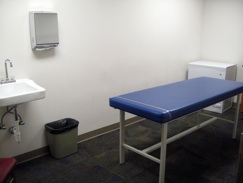Hydrotherapy is an important healing modality in traditional naturopathic medicine. It utilizes the therapeutic benefits of water applied in a variety of ways and at various temperatures to promote a specific outcome in a patient’s treatment plan.
 Hydrotherapy can be used as part of a therapeutic treatment plan for a wide range of conditions, including:
Hydrotherapy can be used as part of a therapeutic treatment plan for a wide range of conditions, including:
- Colds, flu and other infections
- Insomnia, stress and headaches
- Immune system disorders
- Pain relief
- Injuries and inflammatory disorders
- Circulatory and respiratory health
- Detoxification and elimination
A naturopathic clinician may use hydrotherapy to soothe or stimulate various systems in the body, and will most likely use it in conjunction with other natural treatments (such as botanical medicine, nutritional improvements or lifestyle changes), so that the body’s natural healing ability is enhanced and supported.
There are several forms of hydrotherapy. Depending on the patient’s health history and symptoms, the naturopathic physician may recommend:
- Constitutional Treatments: A one-hour series of alternating hot and cold compresses to the abdomen and thorax that can support digestion and elimination, relieve stress, and boost immunity;
- Russian Steam Baths: Full body immersion (except head) in steam often used to promote elimination;
- Peat Immersion Baths: A 10-20 minute soak in a hot tub infused with a special mixture that promotes detoxification, followed by a 20-minute “perspiration phase” where the patient is wrapped up and allowed to relax on the treatment table.
 At National University of Health Sciences (NUHS), naturopathic interns have access to a modern hydrotherapy room, complete with a Hubbard tank and steam cabinet. The dedicated hydrotherapy suite allows interns to learn and perform a dozen different hydrotherapy treatments.
At National University of Health Sciences (NUHS), naturopathic interns have access to a modern hydrotherapy room, complete with a Hubbard tank and steam cabinet. The dedicated hydrotherapy suite allows interns to learn and perform a dozen different hydrotherapy treatments.
NUHS Clinician Kelly Baltazar, DC, ND, says, “We’ve used it most commonly in upper respiratory infections and gut issues, and we usually see a good response.”
Hydrotherapy, like many natural modalities with a long history, is finding its place in the modern toolbox of today’s natural healers.


